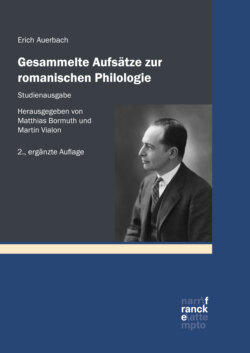Читать книгу Gesammelte Aufsätze zur romanischen Philologie – Studienausgabe - Erich Auerbach - Страница 19
V. Terra et Maria
ОглавлениеIn the 13th Canto of the Paradiso Thomas AquinasThomas v. Aquin speaks of the two persons who were created immediately by the Trinity, and in whom therefore human nature reached its highest perfection:
Però se ’l caldo amor la chiara vista
de la prima virtù dispone e segna
tutta la perfezion quivi s’acquista
Cosi fu fatta già la terra degna
di tutta l’animal perfezione;
cosi fu fatta la Vergine pregna:
Si ch’io commendo la tua opinione
che l’umana natura mai non fue
ne fia qual fu in quelle due persone. (vv. 79–87)
These two persons are Adam and Christ; this is evident, and has been almost universally acknowledged.29 We have to deal here with Christ the man, l’uom che nacque e visse senza pecca (Inf. 34, 115). It may be interesting to note that DanteDante not only followed the general tradition in his treatment of the theme Adam-Christ, but that he even had models for the special development of the figure terra-Maria. On this matter, there is the following statement in the Allegoriae in Vetus Testamentum, cap. VII (Appendix to Opera Hugonis de Sancto VictoreHugo v. St. Victor, Patr. Lat., CLXXV, 639):
Terra de qua primus homo natus est, significat Virginem, de qua secundus homo natus est: virgo terra, virgo Maria. Sicut de terra divina operatione factus est corpus humanum sic de Virgine divina operatione Verbum creditur incarnatum. Sine macula fuit corpus Adae sumptum de terra (‘di tutta l’animal perfezione’), et immaculatum corpus Christi animatum de Maria. Adam factus est in sexta saeculi die, Christus natus est in sextae aetate, et passus est in sexta hora diei, sexta feria hebdomadae. Adam obdormivit ut de costa eius fieret Eva, Christus sopitus est ut de sanguine eius redimeretur Ecclesia. Adam sponsus et Eva de ipso facta sponsa, Christus sponsus et sponsa ab ipso redempta Ecclesia. Adam debuit praeesse et regere Evam, Christus praeest et regit Ecclesiam. Terra ergo Maria; sexta feria, sexta aetas, vel sexta dies, vel sexta hora. Adam Christus, dormitio Adae, passio Christi; conditio Evae, redemptio Ecclesiae. Ad similitudinem quoque Adae et Evae, Christi et Ecclesiae, est Deus sponsus cuiuslibet fidelis animae.
All these motifs are traditional, though I have not found the figure terra-Maria (‘virgin soil’) anywhere else except in DanteDante and in this passage from the Dubia of Hugo of St VictorHugo v. St. Victor. But it too must belong to the tradition, since the Allegoriae are nothing else than a compendium of traditional typology. More widespread is the figure Eva-Ecclesia, in connexion with the lateral wounds30 and the relation between Adam’s sleep and Christ’s Passion; it was familiar already to TertullianTertullian who writes (De Anima, 43): Si enim Adam de Christo figuram Jabot, somnus Adae mors erat Christi dormituri in mortem, ut de iniuria lateris eius vera mater viventium figuraretur Ecclesia. As for the figure Eva-Maria, it has been, I think, most beautifully presented by Bernard of ClairvauxBernhard v. Clairvaux; the following passage comes from the once famous Sermo de aquaeductu (In nativitate B. Mariae Virginis, § 6, Patr. Lat., CLXXXIII, 441), which we will have to quote again afterwards: Ne dixeris ultra, o Adam: mulier quam dedisti mihi dedit mihi de ligno vetito; dic potius: mulier quam dedisti mihi me cibavit fructu benedicto.
